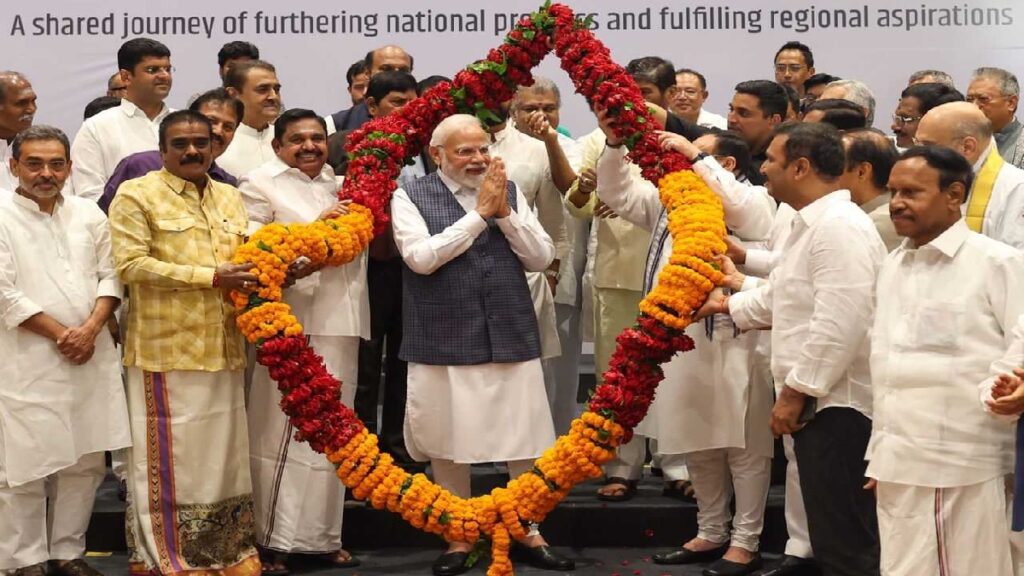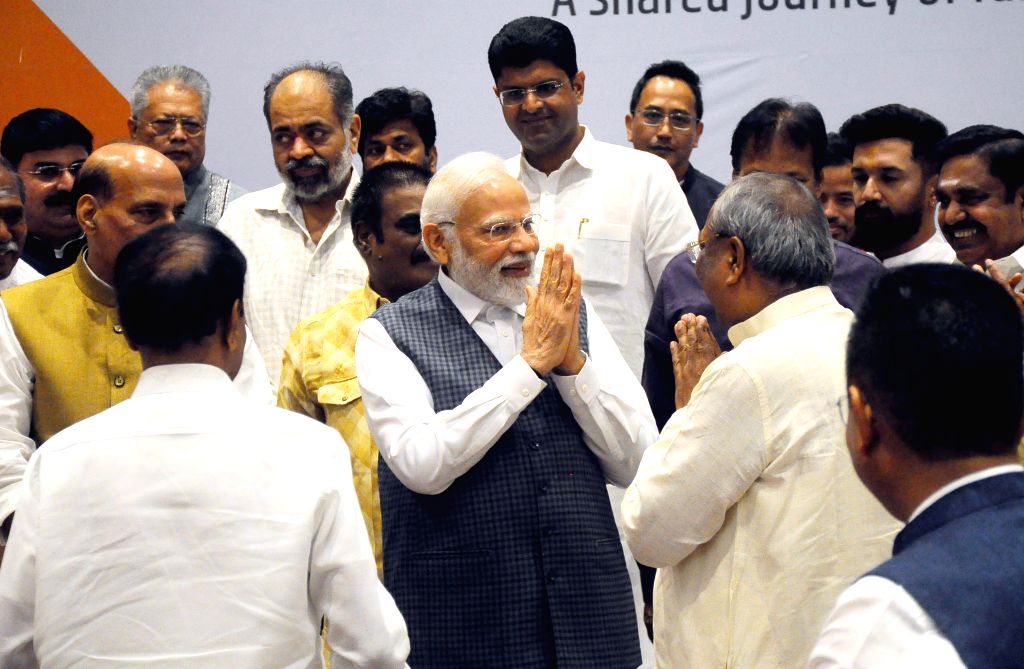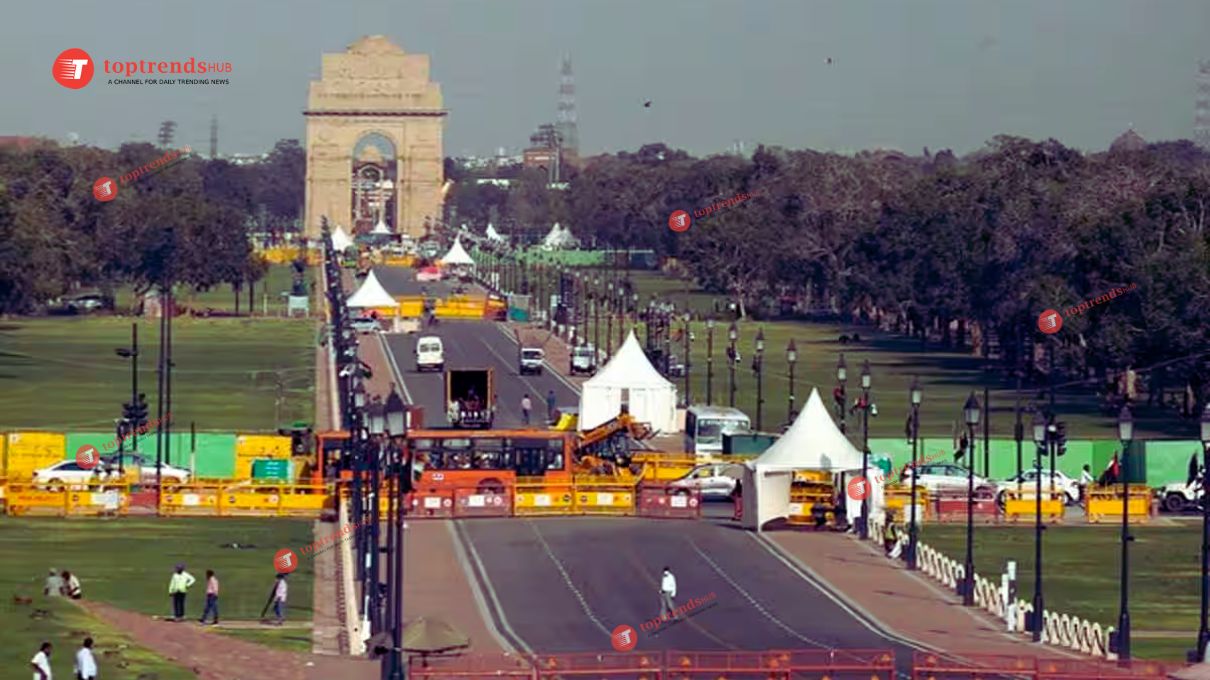What was the main focus of Modi’s Cabinet meeting?
100-Day and Five-Year Plans Prime Minister Narendra Modi emphasized the importance of detailed planning during a Cabinet meeting on June 7, 2024. He directed ministers to develop comprehensive plans for the next 100 days and the next five years. The objective is to ensure effective governance through clear, actionable goals that drive sustained progress and development. Modi highlighted the need for these plans to be specific and measurable to address both immediate priorities and long-term objectives.
In addition to the Cabinet meeting, Modi attended the National Democratic Alliance (NDA) meeting, where discussions focused on strategies for government formation following their recent success in the Lok Sabha elections. This dual approach of detailed planning and strategic political alignment underscores Modi’s commitment to effective administration and governance.
Why are the 100-day and five-year plans important?
100-Day Plan:
- Focus on immediate priorities.
- Set actionable and achievable short-term goals.
Five-Year Plan:
- Outline long-term objectives.
- Ensure sustainable development and consistent progress.
Additionally, Modi attended a National Democratic Alliance (NDA) meeting to strategize government formation post their recent electoral success. This meeting aimed at aligning the coalition’s goals with the newly set plans for governance.

Detailed Objectives: Implementation Strategy
- Economic Growth: Boosting economic activities, supporting startups, and enhancing trade policies.
- Infrastructure Development: Accelerating the completion of ongoing projects, initiating new ones, and upgrading existing infrastructure.
- Social Welfare: Improving healthcare, education, and housing through targeted programs and funding.
- Governance Reforms: Streamlining administrative processes, reducing bureaucratic red tape, and enhancing transparency.
- Sustainable Development: Fostering environmentally sustainable practices and integrating green technologies into development projects.
Implementation Strategy:
- Immediate Actions: The 100-day plan will address urgent issues such as inflation control, job creation, and disaster management preparedness.
- Long-Term Vision: The five-year plan will focus on transformative projects that align with India’s vision for 2047, the centenary of independence.
Significance:
- Accountability: Clear, measurable goals ensure that progress can be tracked and evaluated.
- Transparency: Public disclosure of plans fosters trust and confidence among citizens.
- Sustained Progress: Continuously updated plans ensure that development keeps pace with changing needs and global trends.
Discussion in the NDA meeting

The NDA meeting discussed strategies for forming the government after the election victory. This likely involved deliberations on coalition partners, distribution of ministerial portfolios, policy priorities, and coordination among alliance members to ensure effective governance.
Additionally, the meeting might have addressed strategies for managing parliamentary affairs and building consensus on key legislative agendas. Such discussions are crucial for consolidating political alliances and laying the groundwork for stable governance following an electoral win.
Fit into Modi’s governance strategy
100-Day and Five-Year Plans
The NDA meeting aligns seamlessly with Modi’s governance strategy, which emphasizes meticulous planning and goal setting for sustainable development. By convening to discuss strategies for forming the government post-election victory, Modi demonstrates his commitment to structured governance and proactive decision-making.
This approach reflects Modi’s belief in setting clear, actionable goals that drive progress across various sectors. It underscores his administration’s focus on systematic development, efficient administration, and delivering tangible outcomes for the nation. Overall, the meeting serves as a cornerstone in Modi’s governance playbook, reinforcing the importance of strategic planning and goal alignment in achieving long-term sustainable development goals. Within this context, the 100-Day and Five-Year Plans emerge as essential tools for realizing Modi’s vision, guiding the nation towards comprehensive growth and prosperity.
Next steps:
Following the NDA meeting, the next steps entail a collaborative effort among ministers to actualize the discussed plans. This process involves detailed planning, thorough review, and robust implementation strategies to ensure progress. Ministers will be tasked with delineating specific action points, allocating resources efficiently, and establishing timelines for execution.
Additionally, mechanisms for continuous monitoring and evaluation will be instituted to track progress and address any challenges that may arise. This proactive approach underscores the government’s commitment to delivering tangible outcomes and driving sustained development across various sectors.
Overall, these next steps reflect a concerted effort to translate discussions into concrete actions, thereby advancing the nation’s socio-economic agenda. By implementing robust monitoring and evaluation systems, the government ensures accountability and transparency in the execution of the 100-Day and Five-Year Plans, fostering public trust and confidence in the governance process. This proactive stance further reinforces the government’s dedication to achieving meaningful progress and addressing socio-economic challenges effectively, ultimately propelling India towards a brighter future.
Frequency of Cabinet meetings:
Cabinet meetings, integral to governance, are convened periodically under Modi’s administration. These gatherings serve as critical platforms to review progress, address emerging issues, and recalibrate strategies as needed. The frequency of these meetings underscores Modi’s proactive approach to governance, ensuring timely interventions and course corrections to drive effective administration.
100-Day and Five-Year Plans
By fostering a culture of regular engagement and accountability, these meetings facilitate seamless coordination among ministries, enabling cohesive policy implementation and institutional collaboration. Ultimately, the frequency of Cabinet meetings reflects Modi’s commitment to responsive governance and sustained progress, underpinned by dynamic decision-making and adaptive leadership.
Impact of plans on the public
The impact of the plans formulated in these meetings is profound, resonating deeply with the public’s aspirations for improved governance and enhanced quality of life. By prioritizing initiatives aimed at bolstering governance structures and service delivery mechanisms, the government seeks to instill greater efficiency, transparency, and accountability in its operations. This translates into tangible benefits for citizens, such as streamlined access to essential services, better infrastructure, and more responsive public institutions.

Furthermore, these plans encompass a holistic approach to development, addressing diverse socio-economic challenges faced by different segments of society. Whether it’s improving healthcare facilities, expanding educational opportunities, or fostering economic growth, the overarching goal is to uplift the well-being of all citizens. By focusing on inclusive and sustainable development strategies, the government aims to bridge socio-economic disparities and empower marginalized communities, thereby fostering social cohesion and fostering a sense of collective prosperity.
Moreover, the impact of these plans extends beyond immediate outcomes, laying the groundwork for long-term transformative change. By investing in human capital, promoting innovation, and creating an enabling environment for entrepreneurship, the government aims to unlock India’s full potential and position the country as a global leader in the 21st century. Ultimately, the impact of these plans is not just measured in terms of statistics or metrics but in the tangible improvements in people’s lives, fostering a brighter and more prosperous future for generations to come.






